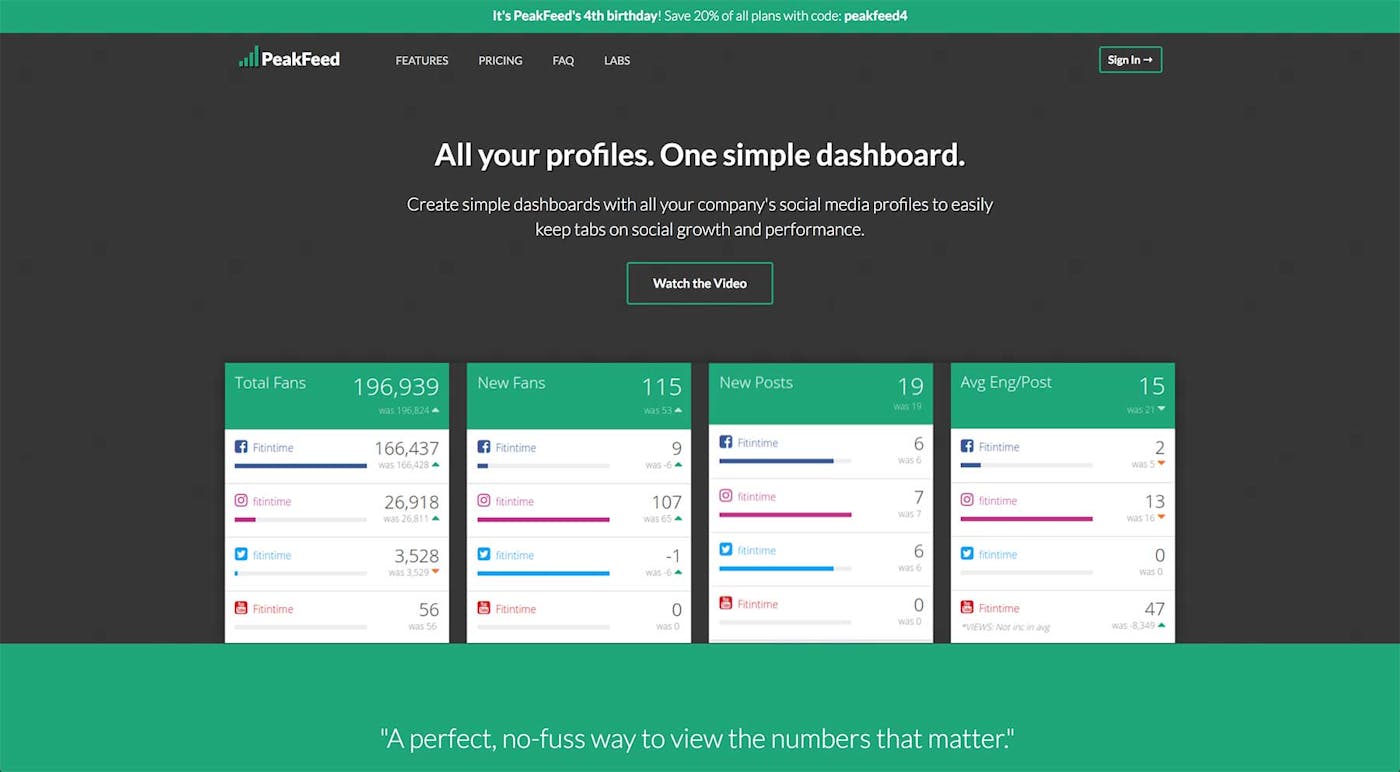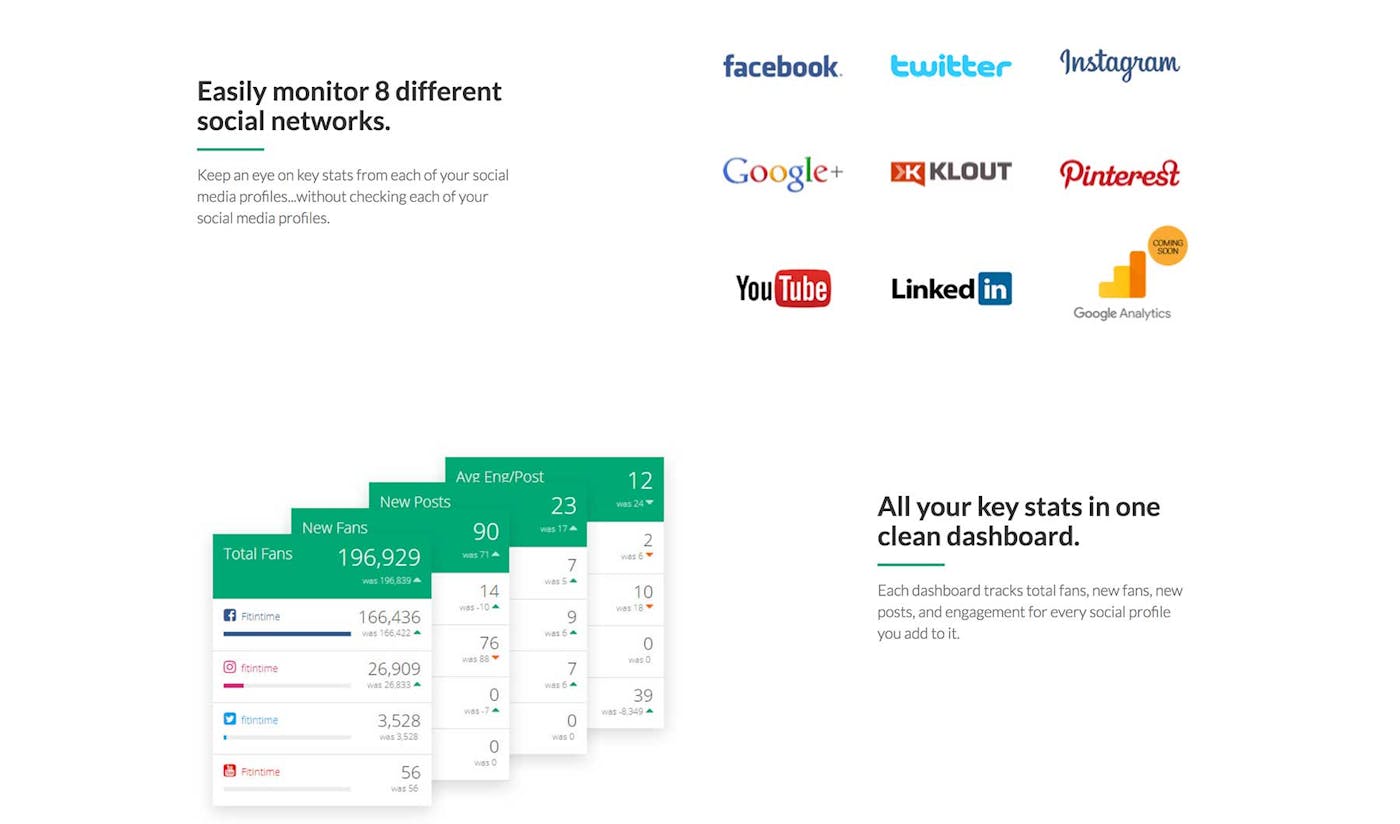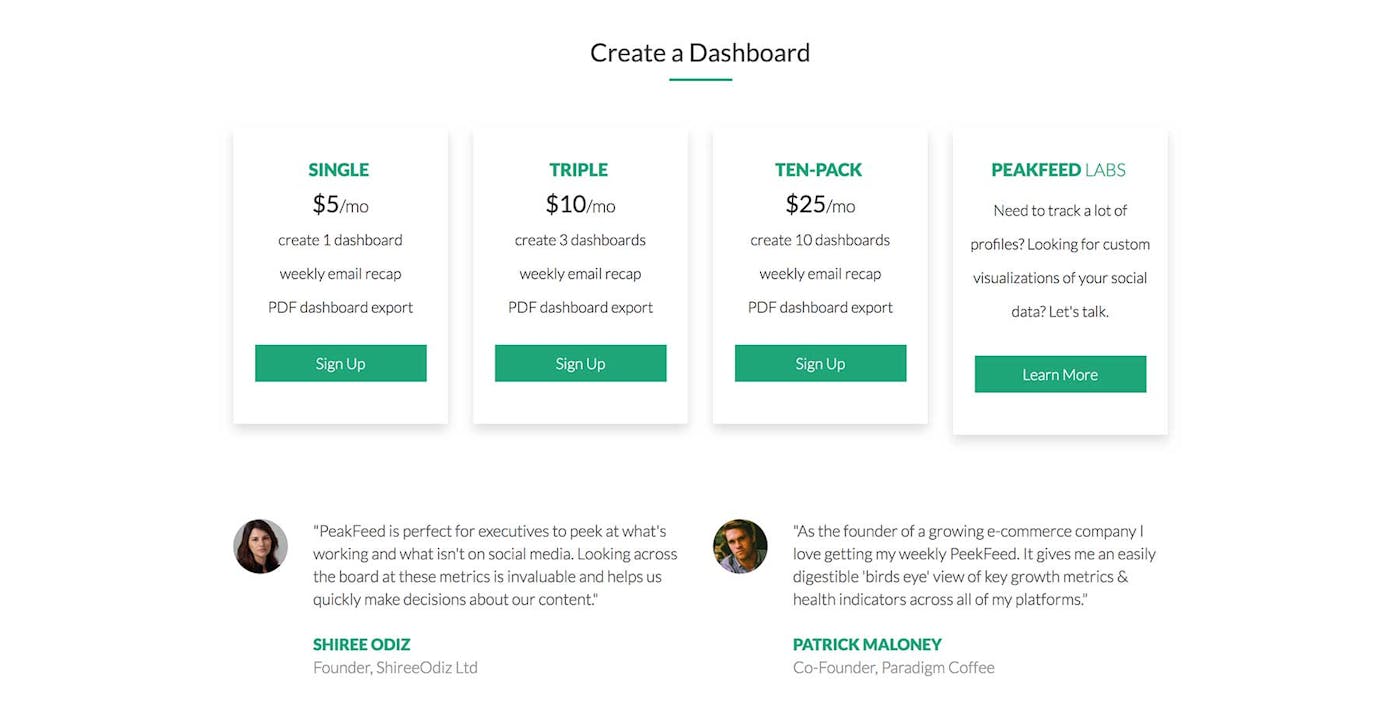How I Built and Grew PeakFeed to $500/mo in
Revenue
Hello! What's your background, and what are you working on?
Hi, my name is Gregg Blanchard. I'm the guy behind a simple social analytics service called PeakFeed. PeakFeed is much more of a solution to a problem than a platform. Meaning, it doesn't have a lot of options to customize, but it's crazy easy to get setup. Think of it like a grocery store versus a restaurant. The former gives you endless options but requires more time and skill. The latter gives you fewer options but gives you a really good result quickly and easily.
That's PeakFeed.
You create an account, enter the URLs of your company's social profiles, and you're done. A weekly report with key stats from all your accounts shows up in your inbox each week and is available from a web dashboard whenever you fancy a glance.
Right now, PeakFeed is generating about $500/mo in revenue.

What motivated you to get started with PeakFeed?
Well, I'm a small business guy, and small business guys wear a lot of hats. Social media was on my plate, but it wasn't a big focus. Still, I wanted to keep an eye on things. Turns out there are two ways to do that: either pay big bucks for a fancy analytics package or track each account individually with that site's built-in reports (or by just manually stopping by).
At the time I'd been dabbling with social media APIs, so when I had a few conversations with other busy marketers or business owners who shared the same frustration, I decided it was worth a go.
What went into building the initial product?
At the time, I wasn't trying to make money as much as I wanted to build my brand, so I actually started the service as a social media trends newsletter that happened to show those simple stats at the bottom.
Eventually I got completely burned out on not only writing each recap, but scrolling Mashable and TechCrunch every day watching for non-sensationalized news that my subscribers would actually care about. (There wasn't any.) So eventually I dropped the whole weekly news stuff, upped the list of sites they could track to four (Facebook, Twitter, Instagram, and Google+), and just focused on that.
That freed up more time, and I eventually added tracking for a few others sites as well.
The initial newsletter concept was pretty simple, though, so I got most of the up-and-running in a weekend.

How have you attracted users and grown PeakFeed?
From the beginning, getting my users to tell their friends has been a huge part of gaining momentum for PeakFeed.
When it was free, subscribers could unlock some features by getting a few friends to sign up through their link. I worked really hard to drive not just shares, but shares on the right channels. Twitter shares? Meh. Facebook? Better. But for PeakFeed, someone sharing their link on LinkedIn was gold. So I put a lot of time and effort into optimizing the messaging and layout to do just that.
Once I went to paid, things were a little trickier.
What I ended up doing was setting up a permanent waiting list. Meaning, nobody could just sign up for an account and pay me money — they had to give me their email address. Then, every day I'd hit them with follow-up messages. Day one was their access link to actually sign up, but then day two was a message about how if they got three friends to pay for accounts, they'd get a free account of their own.
It was a tricky balance to strike between incentivizing people to share while also not having an email list with nothing but people waiting for their friends to sign up, so days 3-5 were more focused on the product and features to get people to pay and sign up.
Once I got it dialed I not only got a ton of shares, but I also got a steady supply of paid users, and I used that formula for over a year.
What's your business model, and how have you grown your revenue?
PeakFeed was unique in that when I first went to paid accounts, new users could pay whatever they wanted for the service. This was a risk, but it did a few things.
First, it gave me a bunch of paid users quickly, which was great because their feedback about the service turned out to be very different than free users'. Second, it gave me priceless data on which to base a more traditional fee structure once I made that move. Third, it gave me lots of great user testimonials to use in my marketing. And fourth, it made me an authority on pay-what-you-want, which earned some additional PR and traffic.
Today I have a standard, tiered pricing structure, but it works because I was basing it on data, I had a strong marketing message thanks to testimonials (and the insight into the product's key features that testimonials provide), and my product is dialed for paid users.
All of these have contributed to a 3x increase in revenue since last summer:
| Month | Revenue |
| Jun 17 | 143 |
| Jul 17 | 172 |
| Aug 17 | 222 |
| Sep 17 | 216 |
| Oct 17 | 271 |
| Nov 17 | 348 |
| Dec 17 | 433 |
| Jan 18 | 526 |
So while I'd absolutely recommend a pay-what-you-want model to someone just getting started, you'll also hit a ceiling with it pretty quickly. So I don't think it's a long-term concept for most.
One last note there: I built both the pay-what-you-want and the fixed price stuff on Moonclerk, and I'm so glad I did. I am by no means a professional developer so even something like Stripe is a little above my pay grade. Moonclerk is built on Stripe, but gives you a secure, hosted payment form that you can totally customize with CSS, baked-in notification emails, and then a super-simple API that you can call to get user details once they're redirected back to your site after payment.

I can't even begin to tell you how many hours of frustration it's saved me over the years, which is critical for a project like mine that I have very limited time to work on.
What are your goals for the future?
One thing to point out is that quitting my day job is not my end goal with this or any other side project. I love the creative outlet, and I love the extra money. But I have two crazy-cute kids, a job that I really enjoy, and I love being able to turn off the computer at 5pm and leave all of that behind or go on vacation and not have to take my work with me.
So my goals for PeakFeed are pretty simple: keep growing it without putting any more time toward the project than I already am. If I had to put a number on it, $1,500/mo would be completely awesome.
It's also important to note that PeakFeed is actually four years old. Some IH readers might scoff at $500/mo after four years, but I'm more than pleased with that number given that I only work on it about 2-4 hours per week at most, and I've gone as long as six months without touching it (when my son was born). Plus, in the last year (now that I've gotten a little more spare time back in my life), I've been able to triple the revenue, which gives me a lot of optimism for the next couple years.
What are the biggest challenges you've faced and obstacles you've overcome?
Probably my biggest challenge has been support. I draw a hard line between side projects and my day job or family time. For example, I don't check PeakFeed emails until I'm done for the day. And, as I mentioned, I won't even check them when I'm on vacation so I can just enjoy the time with my family.
This means that I've lost a lot of users who, encountering a problem, emailed me and left before I could solve their problem, since it took me a day or two to reply.
Spending some extra time on the sign-up experience and being clear that it's just one guy behind the scenes has helped, but my churn will always be higher than other services because of it, and accepting that fact was a tough pill to swallow but a very liberating one once I did.
Have you found anything particularly helpful or advantageous?
This will sound a bit ironic given where this sentence is being read, but I read very little about startups and side projects anymore. The occasional story on IH is all that I allow myself.
One reason for this is pretty simple: every hour I spend reading about someone else's projects is an hour I'm not working on my own. But as I look back over these years of side projects, the lessons that have actually made a difference in terms of revenue and success are the ones I've learned from by own trial and error, not studying someone else's.
The catalyst for decreasing my content consumption was mostly just overload, but as I've cleared up some mental bandwidth I've started to see more clearly my own projects and realize that I don't need nearly as much outside insight as I thought.
What's your advice for indie hackers who are just starting out?
I think you've just gotta be really patient, really consistent, and you've gotta be careful with your expectations.
PeakFeed is showing a lot of potential right now, but it only happened because I've been consistently hammering away at it for 3-4 years. Cameron Moll once said that any new thing usually takes a couple years to gain sustainable traction, and I completely agree.
This is especially true when you're working on a side project and you've really gotta scale your expectations with the time your have to put toward it. If you're only working on your hustle 10 hours a week, and a traditional entrepreneur puts 100 hours a week into theirs, learn to be satisfied with 1/10 of their results. Part of the reason $500/mo is great for PeakFeed is because over the years I've only spent the equivalent of a couple months worth of full-time work on it.
Where can we go to learn more?
I keep it pretty simple so you can follow PeakFeed at http://peakfeed.com. Any blogging I do about projects is now on my own site which is http://www.greggblanchard.com. If you have any questions for me or feedback, I'd love to hear. I'll keep an eye on the comments section below.
